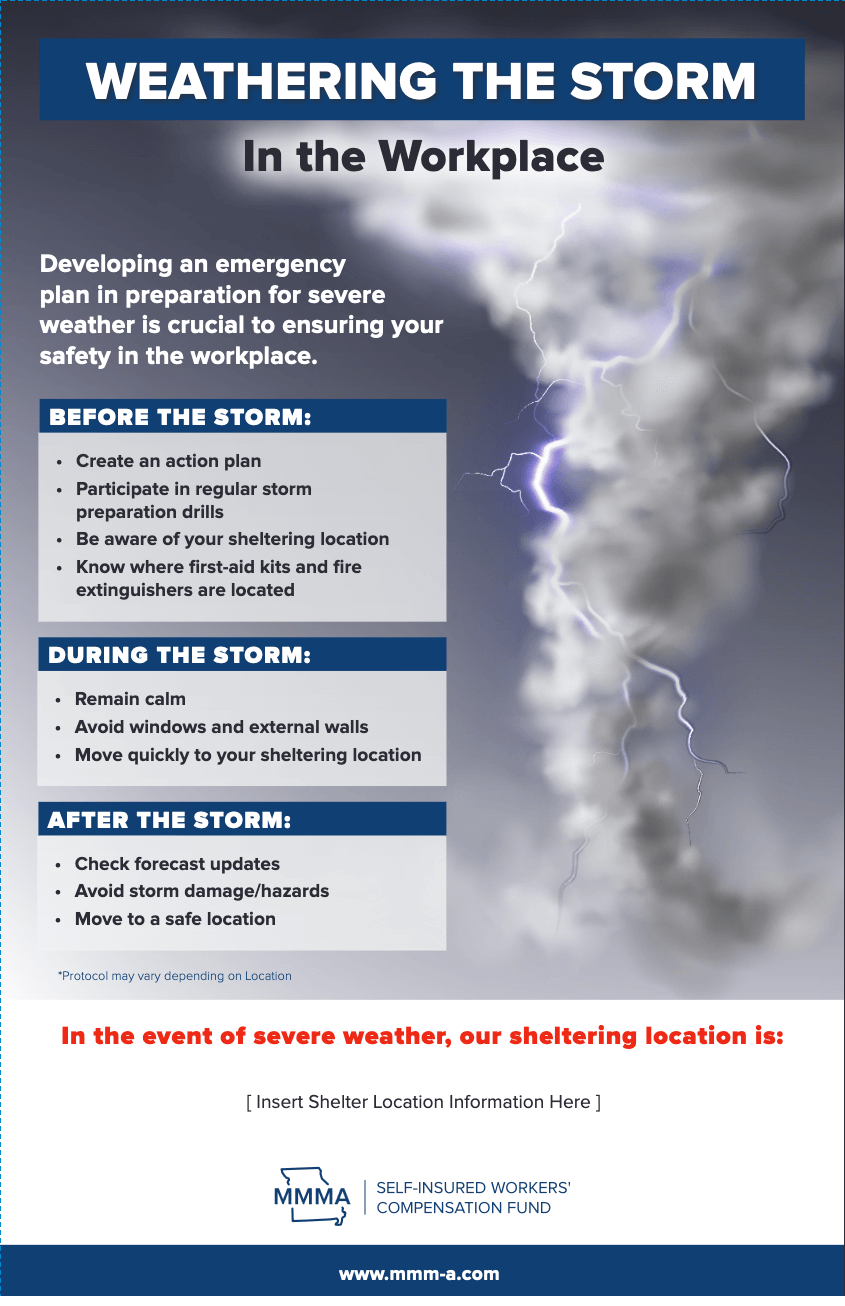Weathering the Storm
Developing an emergency plan in preparation for severe weather is crucial to ensuring your safety in the workplace.
Be Prepared
Before the Storm
- Create an action plan
- Participate in regular storm preparation drills
- Be aware of your sheltering location
- Know where first-aid kits and fire extinguishers are located
During the Storm
- Remain calm
- Avoid windows and external walls
- Move quickly to your sheltering location
After the Storm
- Check forecast updates
- Avoid storm damage/hazards
- Move to a safe location

In the event of severe weather, move to your workplace or home’s sheltering location.
*Protocol may vary depending on Location
Tornados
- A tornado watch means that weather conditions are favorable for formation and you should stay alert for approaching storms.
- A tornado warning indicates that a tornado has been seen or detected on weather radar, and you should take shelter immediately.
- Tornado sirens are designed to be an outdoor warning system to let people know that severe weather is approaching.
- When you hear tornado sirens, take shelter indoors and monitor the weather via local media or a NOAA Weather Radio.
- It is safest to take shelter in an interior room or wall in the basement or lowest floor of the building you’re sheltering in. Interior walls can provide protection from debris, and you should distance yourself from exterior walls and windows.
- If you are in a vehicle when a tornado is approaching, pull over to the side of the road at once, exit the vehicle, and lay flat with your arms covering your neck in the closest ditch.
Flash Floods
- Waters can rise quickly, so take to higher ground as soon as you receive the flood warning.
- Never attempt to cross flowing streams or allow children to play in the flood water.
- If you have time or are instructed to do so, move essential items to the highest floor in your building or home, disconnect appliances, and turn off utilities at the main switch or valve.
- Never touch electrical appliances or utilities if you are in standing water.

